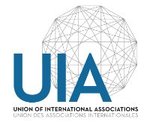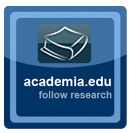Science and Education a New Dimension
Iss. 195. 2019.
N. V. Davydenko Architectonics of Ukrainian XVI-XVIIth century’s document: influence on Latin language socio-legal terminology research
https://doi.org/10.31174/SEND-Ph2019-195VII59-01
Abstract. This article considers the research features of socio-legal terminology in Ukrainian documents in XVI-XVII centuries in the context of their structure, components, that is according to documents architectonics. In that connection, the most informative analysis is based on documents main body’s clauses: narration, disposition and sanction, which are taken from civil, criminal and trade law. But certain terminology group research is focused on different document’s parts and clauses.
Keywords: architectonics, Latin document, social and legal terminology, term, structure, clause.
N. V. Davydenko Architectonics of Ukrainian XVI-XVIIth century’s document: influence on Latin language socio-legal terminology research
V. S. Donii Leveling of imperial politics and predominating of national ideas in the film story "Ukraine in Fire" by O. Dov- zhenko
https://doi.org/10.31174/SEND-Ph2019-195VII59-02
Abstract. The specific of interpretation of national ideas in the context of soviet ideology has been investigated in the article. The film story “Ukraine in Fire” doesn’t belong to trajectory of soviet literature development, based on ideological and artistic models. Social, political and ideological stencils are absent in stories. Author presented truthful reflection (not distorted by soviet ideology) of tragic reality of World War II.
Keywords: national identity, historical, war, ideology.
V. S. Donii Leveling of imperial politics and predominating of national ideas in the film story “Ukraine in Fire” by O. Dov- zhenko
O. A. Gapchenko Precedent names in the individual lexicon of the bilingual personality
https://doi.org/10.31174/SEND-Ph2019-195VII59-03
Abstract. The article studies the status of precedent phenomena in a bilingual individual lexicon. Precedent names are considered both as linguistic signs and cognitive base elements. There analyzed the factors which determine the storage and functioning specifics of precedent type cases in the structures of bilingual individual lexicon. The facts of impact of individual natural and combined bilingualism on these processes are also viewed.
Keywords: linguistic personality, precedent phenomenon, individual lexicon, ethnolinguistic and cultural consciousness.
O. A. Gapchenko Precedent names in the individual lexicon of the bilingual personality
L. O. Goncharenko The purpose of teaching interpretation
https://doi.org/10.31174/SEND-Ph2019-195VII59-04
Abstract. The article is dedicated to the research of interpretation. The analysis of interaction of the three main types of speech activity in the translation process was carried out (reception, transposition, realization). Translation competence was characterized. Components and skills of translation competence, which determine aims of learning, were highlighted.
Keywords: oral translation, translation training, translator, skills, memory.
L. O. Goncharenko The purpose of teaching interpretation
I. A. Khomenko Linguistics as a tool for self-defense of civil society (to the question of identifying the nature of public protest by methods of linguistic analysis of the communication environment)
https://doi.org/10.31174/SEND-Ph2019-195VII59-05
Abstract. The article is devoted to the problem of using linguistic methods in order to study the crisis manifestations of social dynamics. The aim of the study is to create intelligent tools that allow to distinguish a natural mass protest against social injustice from a secret operation, using a morally justified public reaction to the violation of civil rights and freedoms with a destructive purpose. The article describes the specific manifestations of inconsistencies of reality and its reflection in the media, allowing to draw conclusions about the latent intervention of external forces in civil conflict.
Keywords: linguistics, social communications, mass protest, emergence, manipulation.
I. A. Khomenko Linguistics as a tool for self-defense of civil society (to the question of identifying the nature of public protest by methods of linguistic analysis of the communication environment)
M. P. Kolisnyk Functioning Patterns of Graphons in the Speech of English North-East Dialect Speakers
https://doi.org/10.31174/SEND-Ph2019-195VII59-06
Abstract. The paper presents the experimental study results of the specificity of the deviations in the lexical system registered in the speech of the English north-eastern dialect speakers within the period of 1960-2010 years. With regard for time intervals of the dialect functioning as well as gender and dialect speakers’ sociocultural level, the author has given the graphical interpretation of frequency rates of graphons functioning in the English north-eastern dialect. The author also proves the expediency of their consideration with regard to social and political changes of the society.
Keywords: dialect, northern east of England, lexical deviations, graphons, sociocultural level, sex.
M. P. Kolisnyk Functioning Patterns of Graphons in the Speech of English North-East Dialect Speakers
T. Krupkina Discourse strategy characteristics of the warning speech acts in the modern German dialogical discourse
https://doi.org/10.31174/SEND-Ph2019-195VII59-07
Abstract. The typical strategies of warning speech act realization are defined in the article on base of the modern German dialogical discourse: argumentation, empathy, politeness, concern and manipulation. Taking into account its hybrid nature, warning shows two types according to its speech expression: the explicit type and the implicit one. We deal with the explicit warning speech act in cases when: 1) the assertive and directive components are expressed explicit; 2) the warning illocution is expressed with the explicit performative formula.
Keywords: dialogical discourse, speech act, strategy, warning.
T. Krupkina Discourse strategy characteristics of the warning speech acts in the modern German dialogical discourse
T. Krysanova Multimodal Construction of Fear in Film
https://doi.org/10.31174/SEND-Ph2019-195VII59-08
Abstract. The paper deals with semiotic issues of constructing fear in the multimodal discourse of film. We argue that the multimodal construction of fear is realized through the semiotic integration of verbal, non-verbal and cinematographic resources actualized by visual and acoustic modes. The means characteristic for each semiotic resource have been singled out. Filmic fear can be actualized by the combination of three semiotic resources – verbal, non-verbal and cinematographic or two semiotic resources – non-verbal and cinematographic. A case study analysis allows to elaborate convergent or divergent patterns of filmic fear according to the parameter of the emotive congruence.
Keywords: emotive meaning, fear, film, multimodal construction, semiotic system.
T. Krysanova Multimodal Construction of Fear in Film
A. R. Kurhanska, D. O. Chystiak The cosmogonic mythologem in A. Mockel’s lyrics
https://doi.org/10.31174/SEND-Ph2019-195VII59-09
Abstract. The article presents the analysis of mythological elements of the text in the cognitive aspect. The significance of the archetype as a unit of consciousness and figurative component is emphasized on the example of the poetry of Belgian author A. Mockel. In addition to the figurative and conceptual level of the text, the archetypal level is of scientific interest as it allows to reveal the semantic sources of poetic images. The archetype, as a marker of archaic thinking and a text sign, is in close connection with the notion of myth. The myth appears as a sign system which presents the allegorical images and motifs that could be converted into different discourses. The communicative unit that transmits mythological information in the text is a mytheme. At the same time, mythology represents a separate type of thinking, different from the historical, and the myth appears as a source of answers to ontological questions combining in itself two aspects – diachronic (the story of past) and synchronic (the explanation of present). Analyzing cosmo- gonic archaic texts, V.N. Toporov concludes that there is a stable algorithm of the creation of the world describes in these texts: Chaos → Cosmos: Sky and Earth, Water and land → Sun, Moon, Stars, Winds → Time → Landscape → Plants → Animals → Human → Group of people. The fundamental antinomy of A. Mockel’s «Clartés» are the concepts of LIFE and DEATH embodied in figurative complexes WINTER and SPRING which depict the cycle of nature and generate the archetype of the creation of the world: the transition from CHAOS to COSMOS. The author depicts the following scheme: Chaos: the «globe» (motionless, unformed space), «darkness» and «water» → Cosmos: «land» → «time» («moon» and «night», «sun» and «morning») → «landscape» («forest», «pond») → «plants» («sowed earth», «wheat») → «insects» and «animals» («bees», «birds») → «human» → «group of people» («peasants»). Thus, the collection of poems generates megaconcepts of LIFE and DEATH, the concepts of CHAOS and COSMOS embodied in the images of nature and archetypes of elements of nature which emphasize the idea of cyclic MOVEMENT and CRE- ATION of the world from WINTER-DEATH to SPRING-REBIRTH.
Keywords: concept, image, archetype, mythologeme, myth, Belgian symbolism.
A. R. Kurhanska, D. O. Chystiak The cosmogonic mythologem in A. Mockel’s lyrics
L. R. Nebeliuk Linguo-cognitive characteristics of euphemisms based on metaphtonymy in the English language American political discourse
https://doi.org/10.31174/SEND-Ph2019-195VII59-10
Abstract. The article deals with the euphemisms based on metaphtonymy in the English language American political discourse. The author provides lexical-semantic components from the addressee’s spheres of knowledge that contribute to ameliorated, positive perception of the nominations through metonymic extension of conceptual metaphors. Conceptual integration theory is applied to the analysis of the conceptual metaphors with metonymic extension the euphemisms under study are based on. The analysis involves the description of the associative perception of the analyzed euphemisms and their influence on the recipient’s cognition.
Keywords: euphemism, conceptual metaphor, metonymy, metaphtonymy, conceptual integration, political discourse.
L. R. Nebeliuk Linguo-cognitive characteristics of euphemisms based on metaphtonymy in the English language American political discourse
S. Nerian Argumentative discourse as a manifestation of communicative interaction in social networks
https://doi.org/10.31174/SEND-Ph2019-195VII59-11
Abstract. The article is devoted to the study of the linguistic argumentation of communicants during communication in social networks. The peculiarities of communicative interaction in network communication are defined, have remote and virtual character. The specifics of the arguments in the posts and comments of users of the Ukrainian-speaking segment of the Facebook network are described. The features of the argumentation in the network communication are singled out and the notion of argumentative discourse is substantiated. It is proved that argumentative discourse encompasses logical, psycholinguistic, linguo-cognitive and communicative-discursive interpreta- tions. The argumentative discourse is defined as a communicative event that actualizes the communicative intention of persuasion and proof of one’s own position through verbal and nonverbal means. It is revealed that the features of argumentative discourse in the social network: remoteness, polylogism, interactivity, the combination of rationality with emotionality and active use of graphical means of communication.
Keywords: argumentative discourse, interaction, communicators, language behavior , social networks, network discourse.
S. Nerian Argumentative discourse as a manifestation of communicative interaction in social networks
O. P. Palij The historical narrative of Patrik Ourednik
https://doi.org/10.31174/SEND-Ph2019-195VII59-12
Abstract. Historiographic range of problems is one of the stable characteristics of the postmodern novel. Discredit in the postmodern knowledge so called “realistic illusion”, has played an important role for a new understanding of the historical past. In the modern novel art, if to compare with the previous tradition, the accent has moved from the correlation between fictional and real world to the process of the creation of the text itself. This process is not connected with the creation of illusion but with its destruction. It is not by chance, that the main method while creating the modern novel, is a parody which is aimed to reveal the literary method. Postmodern prose destroys conditional borders of the discourse between the literature and history by mixing up the reality and fantasy in the original bricolage of forms and genres. Subject of the modern artistic statement about the past isn’t the history itself but the manner of telling that is the historical narrative. From the point of view of the construction of the past, author possesses an absolute freedom in handling the historical material (sources can be used and interpreted, they can complement fictions facts by real ones or can be simply invented). Finally, novel form allows to express the variability of the history (for example, by placing through motives and images in the different stylistic environment) and multiple options of its interpretation. Historical form and methods of its organization in the postmodern novel are studied on the basis of the novel of contemporary Czech writer Patrik Ourednik «Evropeana».
Keywords: historical narrative, postmodernism, Czech prose, historiographic range of problems.
O. P. Palij The historical narrative of Patrik Ourednik
B. O. Pliushch Causality between indirect translation and translator disparity
https://doi.org/10.31174/SEND-Ph2019-195VII59-13
Abstract. The article focuses on translator disparity, indirect translation and their causal relationship in terms of the translation of the so-called small literatures. It considers the role of a translator disparity in the representation of Ukrainian literary prose as well as explores its correlation with other marginal translation practices such as indirect translation. Ukrainian literature represents an illustrative material of this article since Ukrainian does not belong to the range of global languages and is rarely learned as a foreign language by English native speakers.
Keywords: translator disparity, indirect translation, discordant translation, translator ethics, telos, translator responsibility.
B. O. Pliushch Causality between indirect translation and translator disparity
O. H. Savchuk, N. M. Marchenko Peculiarities of Hillary Clinton’s rhetorical and discursive practices expressiveness intensified by stylistic means
https://doi.org/10.31174/SEND-Ph2019-195VII59-14
Abstract. The article analyses the stylistic means use aimed at enhancing efficiency of ideas which Hillary Clinton utters in her speeches before and during the presidential election campaign. Our findings have shown that the typical figurative and, syntactic and stylistic means includes metaphors, syntactic repetition, parallelism, anaphora, rhetorical questions and incentive constructions. It reveals their role for the formation and intensification of the female presidential candidate’s positive image.
Keywords: political discourse, stylistic means, metaphor, female politician speech, communicative situation.
O. H. Savchuk, N. M. Marchenko Peculiarities of Hillary Clinton’s rhetorical and discursive practices expressiveness intensified by stylistic means
V. I. Savchuk Similarities and differences in prosodic organization of presidential addresses in different communicative situations
https://doi.org/10.31174/SEND-Ph2019-195VII59-15
Abstract. The article presents the results of an experimental phonetic study of prosodic organization of U.S. presidential addresses to Nation and Congress. It discusses prosodic peculiarities in assisting a president to meet his strategic and tactical objectives. The US presidents’ addresses were classified into three types according to such characteristics as situation and emotional and pragmatic potential. It also examines how a topic of speech effects its prosodic organization.
Keywords: prosodic means, presidential discourse, presidential address, type of argumentation, emotional and pragmatic potential, communicative moves.
V. I. Savchuk Similarities and differences in prosodic organization of presidential addresses in different communicative situations
O. B. Skliarenko Multi-perspective narration as characteristic of contemporary German artistic discourse
https://doi.org/10.31174/SEND-Ph2019-195VII59-16
Abstract. The article analyses multi-perspective narration as one of important characteristics in artistic discourse of contemporary German stories. Taking as an example stories of a famous Austrian writer Ingeborg Bachmann we have found out that the usage of some narration perspectives in one story has stereoscopic function that divides author’s «I» to objectively observes described in the story events. It was established that the contemporary German stories include schemes like «auctorial perpective – personal perspective – «I» perspective».
Keywords: artistic discourse, multi-perspective narration, story, «I» perspective, personal perspective, auctorial perspective.
O. B. Skliarenko Multi-perspective narration as characteristic of contemporary German artistic discourse
N. S. Strelchenko Speech acts performed by echo questions in English conversational discourse
https://doi.org/10.31174/SEND-Ph2019-195VII59-17
Abstract. The article examines illocutionary characteristics of echo questions in English conversational discourse, identifying the types of speech acts performed and specifying their felicity conditions. Drawing on data from British and American films and prose, the research revealed that echo questions may be realized as direct speech acts (quesitives) as well as combine several illocutions functioning as indirect directives, expressives, metacommunicatives, constatives, and commissives.
Keywords: echo question, speech act, quesitive, directive, expressive, metacommunicative, constative, commissive, conversational discourse.
N. S. Strelchenko Speech acts performed by echo questions in English conversational discourse
O. M. Svyrydenko Letter and its artistic peculiarities in M. Gogol’s «Selected places from friends’ correspondence»
https://doi.org/10.31174/SEND-Ph2019-195VII59-18
Abstract. The article reveals structure peculiarities of such letter genres as letter of preaching and letter of confession. Their genesis is seen in typical romantic theory where artist is seen like the Messiah and in romantic understanding of art functions. It is pointed out that at the time of Romantic Movement as well as at the apostolic time the letter became a kind of communication among Christians, that all M. Gogol’s heritage witnesses us. As it was established in an old homiletic tradition, M. Gogol’s epistolary preach had at the same time its own original and typically romantic origin. M. Gogol tried to combine genres of preaching and confession, that leaded to the so called «two combined to one» (see Yu. Barabash) genre nature of «Selected parts from friends’ correspondence».
Keywords: Romantic Movement, letter of preaching, letter of confession, preaching tradition.
O. M. Svyrydenko Letter and its artistic peculiarities in M. Gogol’s «Selected places from friends’ correspondence»
K. P. Yesypovych Cognitive map of the French liturgical drama of the Middle Ages (on the material of the mystery "Adam")
https://doi.org/10.31174/SEND-Ph2019-195VII59-19
Absract. The Article is devoted to the development of the techniques of the folk discourse of the France cognitive mapping on the example of the text of the liturgical drama on the material of the mystery “Adam”. The complex approach of the folk discourse cognitive space modeling is carried out by modeling of its functional content, namely by ordering of the propositional models having attributive and transformative component.
Keywords: liturgical drama, naratology, actant, cognitive space, cognitive map.
K. P. Yesypovych Cognitive map of the French liturgical drama of the Middle Ages (on the material of the mystery “Adam”)
Yu. Zablotskyi Moral policy and current affair issues factors in the 2012 US Presidential election speeches
https://doi.org/10.31174/SEND-Ph2019-195VII59-20
Abstract. The article analyses 2012 US Presidential campaign regarding the impact of two important factors defining American political discourse: traditional party’s ideology raising from G. Lakoff’s “moral policy” theory and current social situation in the country. The paper suggests a quantitative content analysis of lexical units referring to a particular topic in election speeches of nominees from Republican and Democratic political parties. Quantitative data has been delivered through calculation of these units in the separate corpus compiled from each candidate’s speeches. The ratio of the lexical units belonging to particular thematic cluster to the total word-stock in every corpus provides information about important issues in each’s candidate programs and their ranking. The position of a certain topic in the rank and its ideology affiliation provides the information about the nature of each’s candidate communicative strategy in particular and 2012 political discourse in general.
Keywords: political discourse, quantitative content analysis, moral policy theory, lexical units.
Yu. Zablotskyi Moral policy and current affair issues factors in the 2012 US Presidential election speeches







